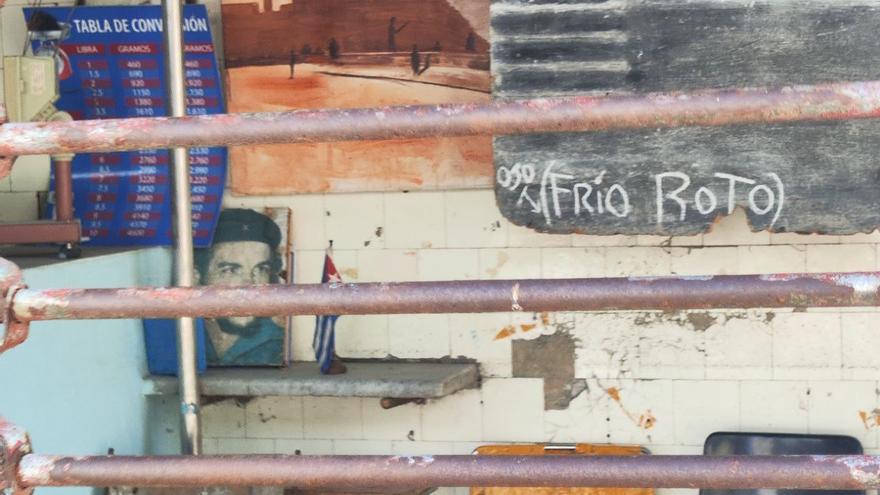
![]() 14ymedio, Juan Diego Rodriguez, Havana, 3 October 2023 — The truck turning the corner alerts the local residents that something has arrived at the butcher shop. Within a few minutes a line forms in front of the door of the establishment and quickly extends halfway down the block. It is not just the desperate urge customers have for a piece of chicken or a bit of ground meat to toss into the pot that causes them to act fast. There’s also the store’s broken refrigerator. “If you don’t buy it today, it will go bad,” explains one neighbor.
14ymedio, Juan Diego Rodriguez, Havana, 3 October 2023 — The truck turning the corner alerts the local residents that something has arrived at the butcher shop. Within a few minutes a line forms in front of the door of the establishment and quickly extends halfway down the block. It is not just the desperate urge customers have for a piece of chicken or a bit of ground meat to toss into the pot that causes them to act fast. There’s also the store’s broken refrigerator. “If you don’t buy it today, it will go bad,” explains one neighbor.
The butcher shop, located in Havana’s Vedado district, preserves some of the design features that were once common throughout the Cuban capital. White tiles on the walls, a wide counter and a metal gate at the entrance that allowed passers-by to see the entire interior even when the store is closed to the public. The original setup also included large refrigerators and a huge cash register that delighted children with various metallic noises whenever it was opened or closed. Of that style, only a few shreds, and the memories of its oldest customers, remain.
“Marquito had a big block of wood over there where he cut the largest pieces,” says an elderly man pointing towards a corner. He is talking about the butcher who ran the business for decades. “He hung shanks and loins from hooks on that tube. Over there he laid out the different kinds of fresh and cured sausages.”
“My mother didn’t like to buy ground meat because she said it was food for poor people. She would turn over in her grave if she knew about this”
It is difficult to imagine the details he describes in light of the sorry state of Cuban retail today. “My mother didn’t like to buy ground meat because she said it was food for poor people. If she knew how things are now, she would roll over in her grave,” he says.
Where once freshly cut steaks were placed to be weighed before being wrapped in paper and handed to the customer, there now stands a faded portrait of Che Guevara. Next to it is a tiny Cuba flag, its white stripes already gray from the soot coming in off the street, its star covered in fly droppings. The current butcher and his friend sit in a couple of nearby chairs when there is nothing for sale in the store, which these days is most of the time.
The cat that once lived here left in search of a place that would provide it with more opportunities to find something to eat. “He had to work harder than a mouse in a hardware store,” notes another customer waiting in line. “When I was a child, my grandmother would take me shopping. Back then you could choose between prime beef or skirt steak,” she recalls. “In my house we really liked beef jerky and we would get it here,” she says licking her chops.
A few hours later, the line has disappeared. The dwindling supply of mortadella, which is reserved for the chronically ill and young children, is running out. The butcher again lowers the metal grate and adjusts the “broken fridge” sign, though it hardly matters anymore because there is not a gram of meat left anywhere. The chalkboard listing the items for sale is completely blank.
____________
COLLABORATE WITH OUR WORK: The 14ymedio team is committed to practicing serious journalism that reflects Cuba’s reality in all its depth. Thank you for joining us on this long journey. We invite you to continue supporting us by becoming a member of 14ymedio now. Together we can continue transforming journalism in Cuba.
